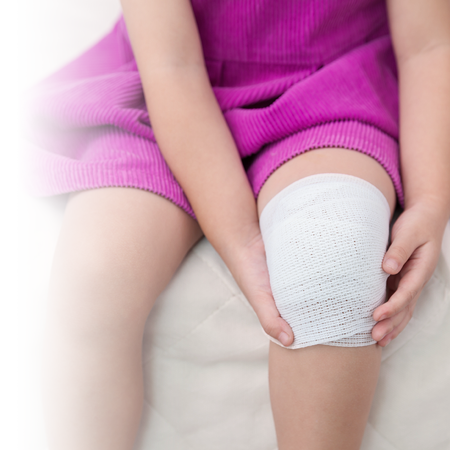Scars can be a source of embarrassment and hard to ignore. That's why so many people try to prevent them or make them disappear.
Healing
One of the skin’s main functions is to protect. Without it, the body would be more vulnerable to a multitude of aggressors: infectious agents, pollution, sun rays, chemicals, etc. Fortunately, in order for it to play its role as a protective barrier, the body has remarkable tissue repair mechanisms, including wound healing, which are triggered as soon as skin is damaged or broken.
A scar forms when a wound damages one or more of the skin’s three layers—the epidermis, dermis, and hypodermis. The epidermis contains several layers of keratinocytes (cells that produce keratin). The dermis mostly consists of collagen and elastin fibers, hair follicles, and sebaceous and sweat glands. Sensory receptors are also found in the dermis. On the other hand, the hypodermis mainly consists of fat cells. Numerous blood vessels run throughout the three layers of the skin.
If the skin is unable to protect against wounds, it has the capacity to renew its cells and even to heal itself. In the case of a minor wound, only a part of the epidermis is damaged. The destroyed cells are then replaced by new ones from the basal layer of the epidermis. However, if the wound is deep, the damage is more significant, making the healing process more complex.
The winning conditions
Optimal healing conditions must be provided for a wound to heal.
Following a minor injury, such as a scrape, cut or burn, wound care is very important to promote healing. To find out more about managing minor wounds, read the following text: First aid 101: treating minor wounds. Your pharmacist can also provide information and advice for minor wounds.
If the wound is a result of an operation or another medical procedure, ask the healthcare professional who performed it for advice on the best care. The same applies if it results from an accident. Do not leave the clinic or hospital without being sure of what to do.
The notion that wounds need air to heal is erroneous and outdated. On the contrary, it is now recognized that the wound healing process is enhanced by a moist (but not a wet) environment. Protecting the skin with a covering agent can therefore be beneficial.
Be patient. In some cases, the healing process can take six months to a year, sometimes longer.
Obstacles to healing
The process leading to proper healing can be hampered by a number of factors, including:
- the presence of foreign objects in the wound
- the presence of a hematoma
- infection
- a disease that affects the ability to heal, such as diabetes or circulation problems
- taking certain medications
- malnutrition
- obesity
In some people, the healing process does not occur normally. In fact, in some ways, it is too efficient—connective tissue cells produce so much collagen that they cause skin outgrowths. These form scars called “keloids”, which are unsightly and sometimes painful. These scars can also cause itching. They are thick, hard to the touch, and pink or reddish in colour on fair skin, or dark brown on black skin. In the worst cases, the outgrowth must be surgically removed.
Some tips for more effective healing
- Allow the injured limb to rest. The longer the injured limb remains immobilized, the less likely the edges of the wound are to separate. Avoid strenuous exercise or activities that are likely to reopen the wound or interfere with proper healing.
- If you have stitches, have them removed after the appointed time. If they are left in too long, the stitches can leave a larger mark than expected.
- Protect the wound from the sun's rays, which can compromise healing and increase the risk of permanent, unsightly scars.
- Speak to your doctor if you notice a persistent or unsightly scar. Certain measures can be considered to rectify the situation.
- Quit smoking. Smoking is generally known to interfere with the healing process, because it narrows blood vessels.
Speak to your healthcare professional about how to care for your wound.

